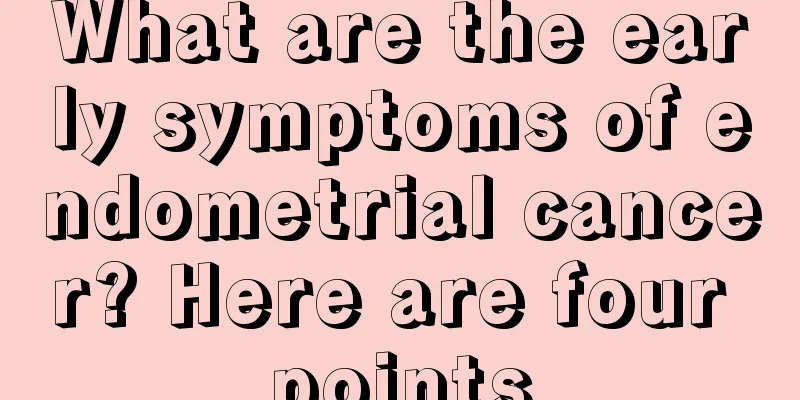How many days should an adult take anti-inflammatory medicine if he has a cough and phlegm?

|
Coughing with phlegm is a common symptom in adults. Most of the time, it is caused by upper respiratory tract infection and requires the use of anti-inflammatory drugs. If it is an acute upper respiratory tract infection, it will take about a week, and the treatment time for chronic patients will be longer. Such patients should not smoke or drink alcohol. They should change clothes in time according to seasonal changes, keep warm and avoid colds. Let’s take a look at the clinical manifestations of upper respiratory tract infection. Depending on the cause and extent of the disease, clinical manifestations may be of different types: 1. Common Cold Commonly known as "cold", also known as acute rhinitis or upper respiratory tract catarrh, is mostly caused by rhinovirus, followed by coronavirus, respiratory syncytial virus, echovirus, coxsackievirus, etc. The onset is acute, and the incubation period ranges from 1 to 3 days, which varies with the virus. It is shorter for enterovirus and longer for adenovirus, respiratory syncytial virus, etc. The main symptoms are nasal symptoms, such as sneezing, nasal congestion, and clear nasal discharge. It may also present as coughing, dry throat, itchy or burning throat, and even postnasal drip. Symptoms such as sneezing, nasal congestion, and watery nasal discharge may occur at the same time or several hours after the onset of the disease. After 2 to 3 days, the nasal discharge becomes thicker, often accompanied by sore throat, tearing, loss of taste, difficulty breathing, hoarseness, etc. There is generally no fever or systemic symptoms, or only low-grade fever, malaise, mild chills, and headache. Physical examination revealed congestion, edema, secretions in the nasal mucosa, and mild congestion in the pharynx. When Eustachian tube inflammation occurs, symptoms such as hearing loss may occur. Purulent sputum or severe lower respiratory tract symptoms suggest concurrent viral infection other than rhinovirus or secondary bacterial infection. If there are no complications, recovery can be achieved in 5 to 7 days. 2. Acute viral pharyngitis or laryngitis (1) Acute viral pharyngitis is mostly caused by rhinovirus, adenovirus, enterovirus, respiratory syncytial virus, etc. The clinical features are itching or burning sensation in the throat, rare cough, and mild pharyngeal pain. When swallowing is painful, it often indicates a streptococcal infection. Infections such as adenovirus may cause fever and fatigue. Adenovirus pharyngitis may be associated with conjunctivitis. Physical examination revealed obvious congestion and edema in the pharynx, and enlarged and tender submandibular lymph nodes. (2) Acute viral laryngitis is mostly caused by rhinovirus and adenovirus. Clinical features include hoarseness, difficulty speaking, pain when coughing, and often fever, sore throat or cough. Physical examination revealed laryngeal edema and congestion, mild enlargement and tenderness of local lymph nodes, and audible stridor in the laryngeal region. 3. Acute herpetic pharyngitis It is often caused by Coxsackievirus A, with symptoms of obvious sore throat and fever. The course of the disease is about 1 week, and it often occurs in summer. It is more common in children and occasionally in adults. Physical examination may reveal pharyngeal congestion, grayish-white blisters and superficial ulcers on the surface of the soft palate, uvula, pharynx and tonsils, surrounded by red halos, which will later form herpes. 4. Pharyngeal conjunctival fever It is mainly caused by adenovirus, coxsackievirus, etc. Clinical manifestations include fever, sore throat, photophobia, and tearing. Physical examination shows obvious congestion of the pharynx and conjunctiva. The course of the disease is 4 to 6 days. It often occurs in the summer, is more common in children, and is easily spread by swimmers. 5. Bacterial pharyngitis and tonsillitis It is mostly caused by hemolytic streptococci, followed by Haemophilus influenzae, pneumococcus, staphylococcus, etc. The onset is acute, with obvious sore throat, chills, and fever (body temperature can reach above 39°C). Physical examination revealed obvious congestion in the pharynx, enlarged and congested tonsils with yellow purulent secretions on the surface, enlarged and tender submandibular lymph nodes, and no abnormal signs in the lungs. |
<<: Why do I have hair on my legs
>>: Is it good to have a tattoo? Does it have any impact?
Recommend
Do squirrels have rabies?
Once an animal is bitten or scratched, it is nece...
What medicine is better for dampness in the body
The idea that the body has excess dampness origin...
What to use for compressed facial mask to remove acne
Compressed facial masks are easy to use and conve...
The physiological curvature of the cervical spine exists
Generally speaking, the normal cervical spine has...
Can secondary lymphoma be cured?
In recent years, we have found that the incidence...
What can I use to wash my hair without losing it
Hair loss is quite serious. I believe this proble...
Does knee replacement surgery have a high success rate?
Knee replacement surgery refers to a method of re...
How to remove moisture by hot compress with coarse salt
As we all know, there is varying degrees of moist...
Which Chinese patent medicines are most effective in treating liver qi stagnation?
The occurrence of liver qi stagnation is very har...
What is the function of licorice powder?
Licorice itself is a traditional Chinese medicina...
How to avoid fine lines on the skin? Do you know the correct steps to prevent fine lines?
A woman's skin is very important. Once fine l...
How to preserve fresh roses
We all know that flowers are most beautiful when ...
Can the feces of patients with intestinal cancer be contagious?
Colorectal cancer is the fastest-growing cancer i...
Will Tremella make you fat?
Tremella is a very common food in our lives. This...
Symptoms of esophageal cancer bone metastasis
Male patient, 29 years old, has felt obstruction ...









